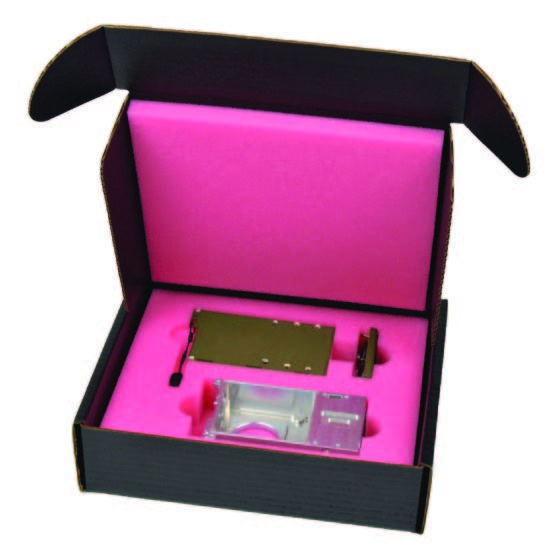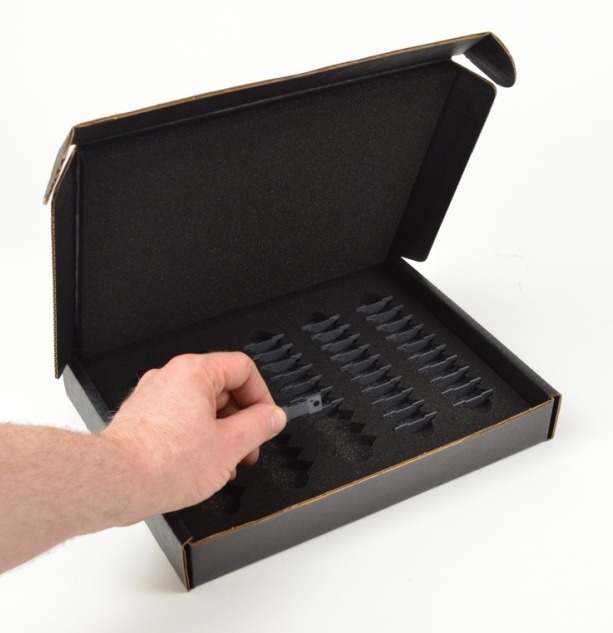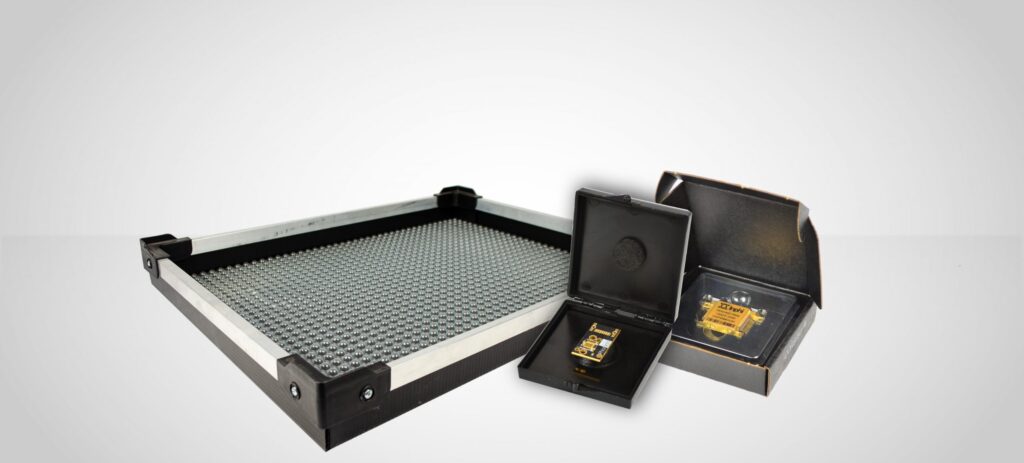A GUIDE TO CORRECT USE OF ANTISTATIC FOAMS
History
Pink ESD foam has been a staple in the world of ESD packaging since its inception back in the 70’s. It is a fantastic product and fulfills many needs in many situations. Pink foam has often been used to cushion packaging or work surface and has been a "fix” for many shortcomings. That said, there is confusion about the anti-static properties and how long they last. Pink anti-static foams have a shelf life. Once the shelf life is gone, the foam can be very dangerous sensitive components and the manufacturing environment. When inspecting an EPA (ESD Protected Area), the most common violation of standard ESD practices is using, or misusing these foams.
As it relates to ANSI/ESD S20.20, 6.1 and 6.2 of ANSI/ESD S541 tells us that packaging (in our case, pink foam) used inside and outside an EPA is required to have certain characteristics.
6.1 Inside an EPA
Packaging used within an EPA (that satisfies the minimum requirements of ANSI/ESD S20.20) shall be:
- Low charge generation.
- Dissipative or conductive materials for intimate contact.
- Items sensitive to < 100 volts human body model may need additional protection depending on application and program plan requirements.
6.2 Outside an EPA
Transportation of sensitive products outside of an EPA shall require packaging that provides:
- Low charge generation.
- Dissipative or conductive materials for intimate contact.
- A structure that provides electrostatic discharge shielding.

One of the characteristics states the materials used must be low charge generating. In most applications, foam is used for “intimate contact”. This is why it's so vital to understand what is ESD static dissipative about pink foam and why it has a shelf life. Once the shelf life is expired, you just have regular foam. So we can better understand the “shelf life,” first we need to look at at regular foam in general, ESD foam, and appropriate applications of it.
Foam Is Great For Cushioning
As a substrate, regular foam provides wonderful cushion to protect items from physical damage. The problem with regular foam is that it is very high on the triboelectric scale for producing a static charge. In fact, all materials, even conductors, can be tribo-electrically charged. The level of charge is impacted by material type, velocity of contact and separation, humidity and several additional factors. Therefore, regular (non ESD) foam is cannot be used in an EPA (ESD Protected Area) environment. Remember, after the ESD properties expire from Pink ESD Foam, you're left with regular foam.
Pink Anti Static Foam
Considering its chemical composition and high surface area, flexible foam is subject to the build-up of static charges. This property is overcome by adding anti-static chemical additives or anti-static surfactants. These additives are most commonly added to the foam during manufacture. Pink is just what the industry chose to help identify the foam as “ESD” or “Antistatic” materials.
The surfactants used are low molecular weight fatty acids often developed from amides or amines. Surfactants are mobile (blooming) surface modifiers which temporarily change the coefficient of friction between mating surfaces (tribo charging). This is a pretty substantial statement. Let us take a look to better understand it. The surfactant molecules are unsaturated in their initial state.
These unsaturated molecular bonds want to absorb moisture. In this unsaturated state, they help lower the coefficient of friction of the foam helping its Antistatic properties. The challenge of unsaturated molecules is their main goal in life is to become saturated. Once the molecule is saturated, they are considered expired and the antistatic properties are gone. How much time does it take for these molecules to become saturated? That depends on several factors. Humidity and the environment play vital roles.
The handling of the foam plays a vital role. Sadly, there isn't any real guideline for how long this takes. Most experts in the industry consider one year as the magic date to begin testing and others recommend testing earlier and some later. It boils down to your understanding and your procedures. What works for some might not work for all.
Shelf Life
Now we know why foam has a shelf life. Once the shelf life has gone, foam won't seem any different, but its ESD protective properties will be gone. We also know that, based on many factors, shelf life can range in timespan. So what do we do?
Luckily, the ESD Association has provided us guidelines to help navigate this problem. 6.1 and 6.2 of ANSI/ESD S541 tells us, as it relates to ANSI/ESD S20.20, that packaging (pink foam) used both inside and outside an EPA has to meet certain characteristics. One of those characteristics is that materials must be low charge generating. It also points out that for intimate contact of sensitive products, it must be dissipative or conductive.
Foam is generally used for intimate contact of sensitive products. You see foam lining racks and shelves, in bottom of drawers, inside containers and as separators between stacks of circuit boards or assemblies. This makes sense. We can't have any charge generating packaging material in an EPA or in some circumstances outside of an EPA.
Now we have an issue. We've outlined and explained why these foams may or may not be static safe. If the foam still meets its material specifications, we’re all good to go. If the ESD properties of pink foam are no more, what can you do? Lucky for us, we can turn again to the ESD Association for guidance. More specifically, ANSI/ESD S541. In section A.6:
The static control properties of some packaging materials can deteriorate with time and use. Compliance Verification of static control packaging properties should be part of the ESD control compliance verification plan.
A6 Compliance Verification
This is a critical statement. It not only validates that material deteriorates over time, it also tells us that we must develop a verification process to ensure the properties are still valid. ESD TR53-01-06 is another reference that validates thos. ESD TR53-01-06 covers compliance verification of ESD protective equipment and materials.


Package Compliance Verification
Make sure to confirm packaging materials as recommended in ANSI/ESD S541 (Packaging Materials for ESD Sensitive Items). Considering the big variety of packaging materials, users should come up with their own packaging compliance verification plan.
FOD (Foreign Object Debris)
One last thing to consider in the use of foam for intimate contact with electronics is the concern about foreign object debris (FOD). All foams, regular non-ESD foams, antistatic foams, and conductive foams will shed particulates to varying degrees. Some foams are much better than others, but foams will generate some FOD. If you are worried about FOD when handling devices, choose other options to eliminate contact with foam.
Summary
So there you have it. We have learned that you may have a problem if you are using Pink ESD Foam.
- Pink ESD Foam has a shelf life
- The shelf life of that foam varies
- When foam loses its ESD properties, it's unacceptable in, and potentially out, of an EPA
- If you're using Pink ESD Foam, it should be a short term solution
- Consider the potential FOD issues with foam
- Have a quality program in place if you are going to use foam long term
Thanks to the ESD Association, there is a potential solution to the challenge of limited shelf life. Compliance verification can make an antistatic foam viable. If you don't have compliance verification, or if it's not practical, then other more permanent options should be chosen.
